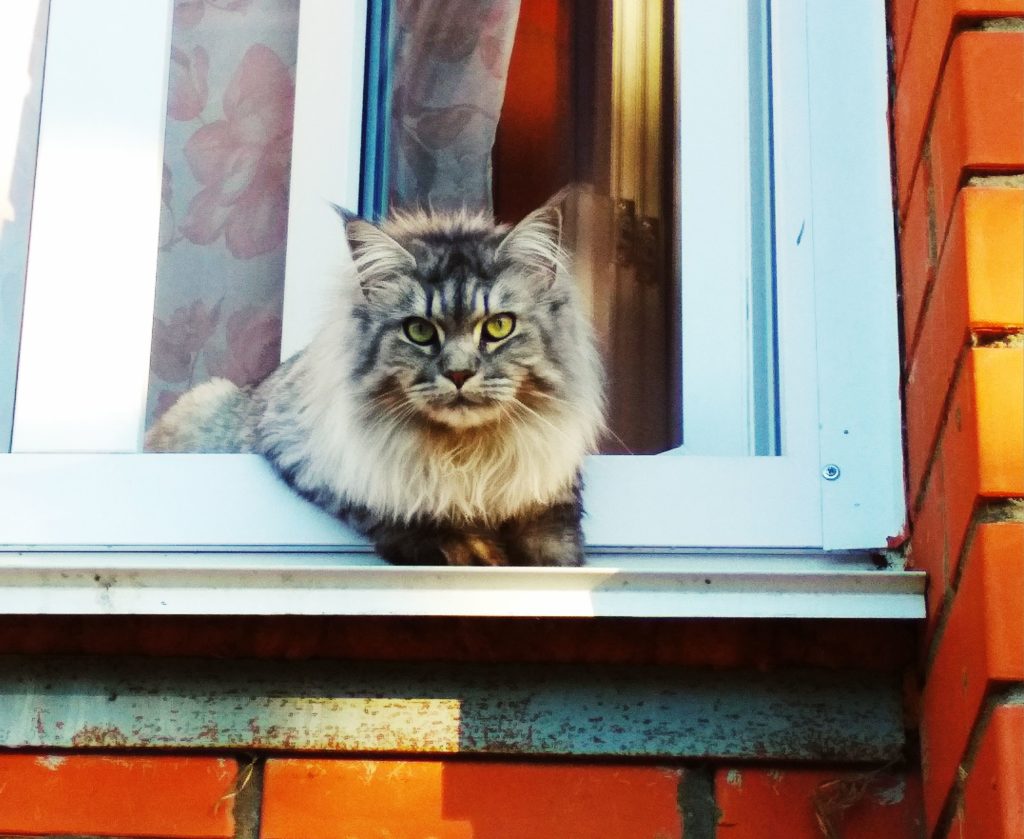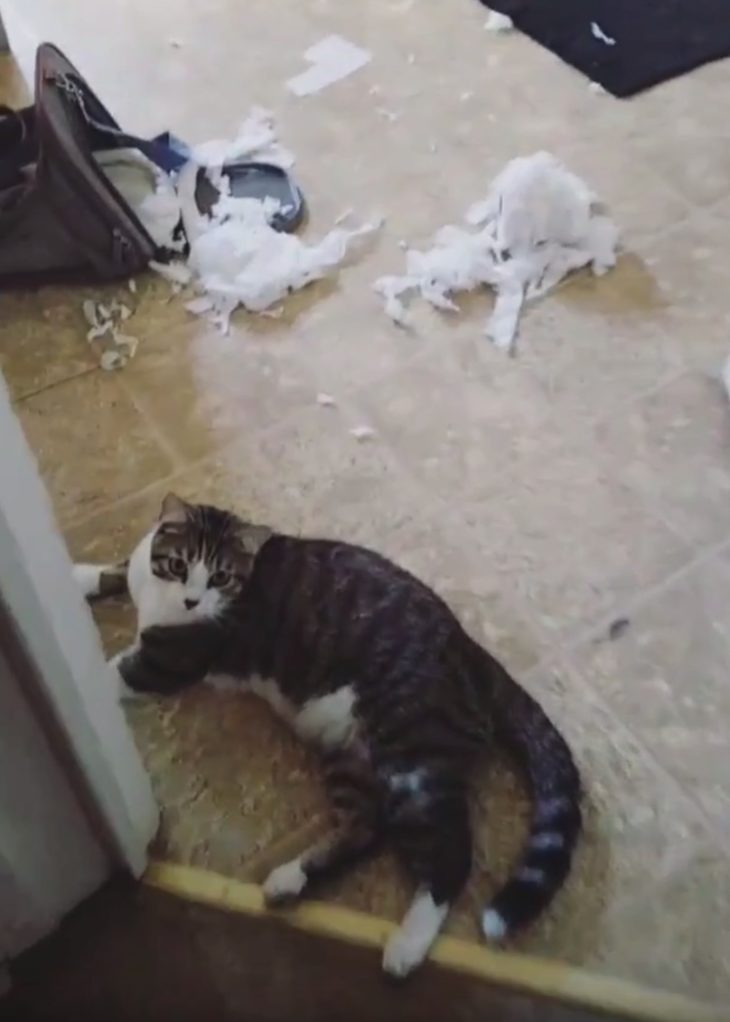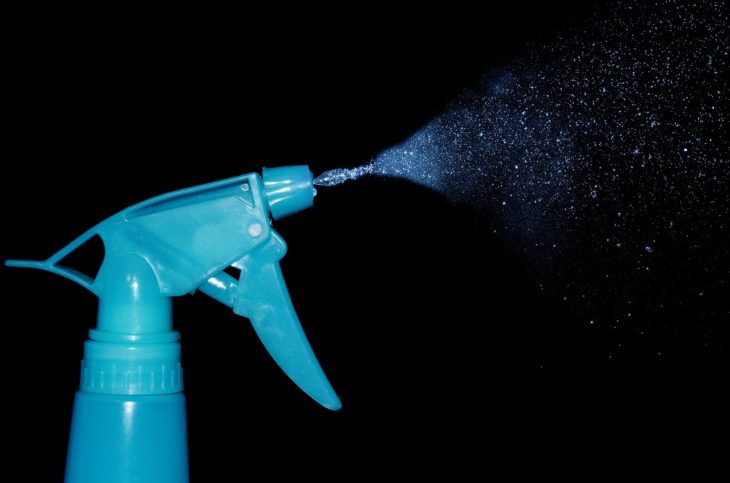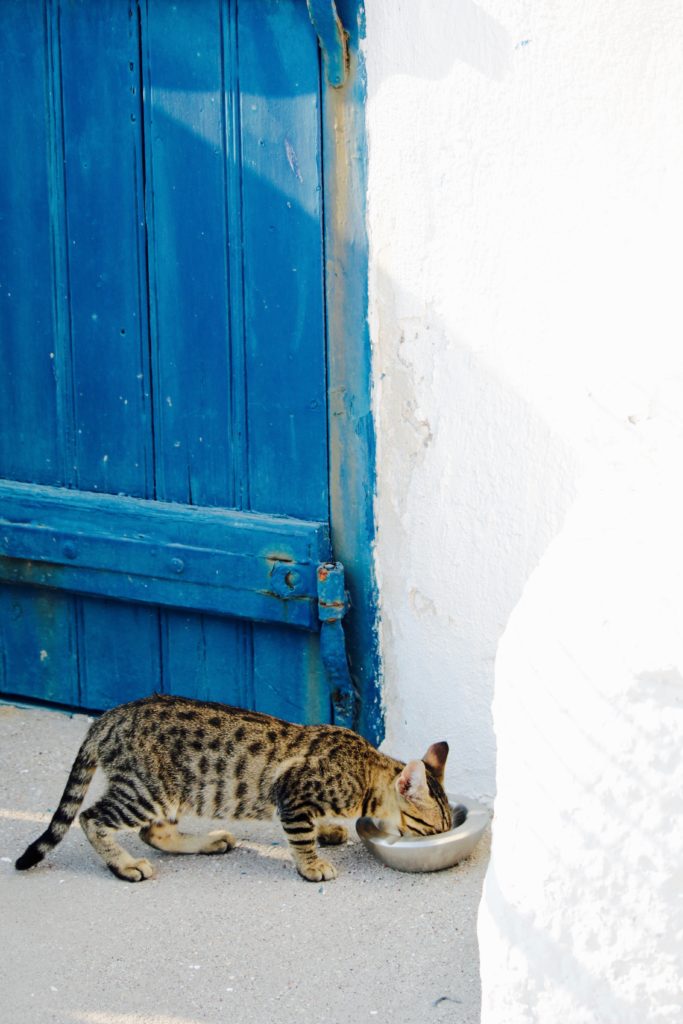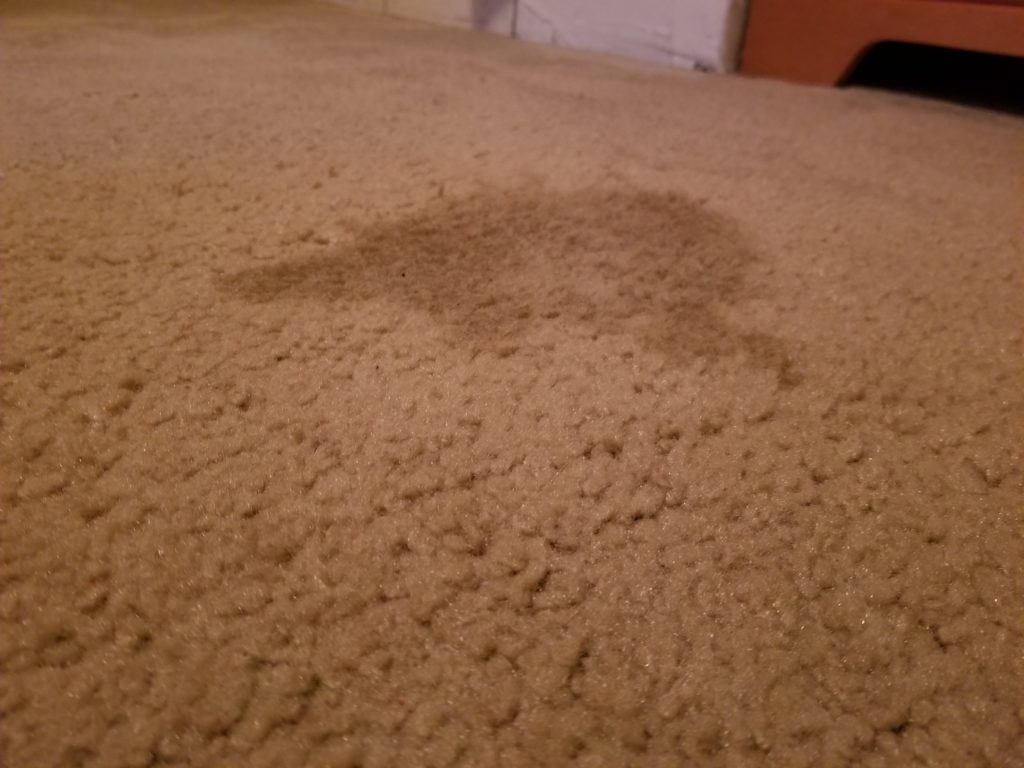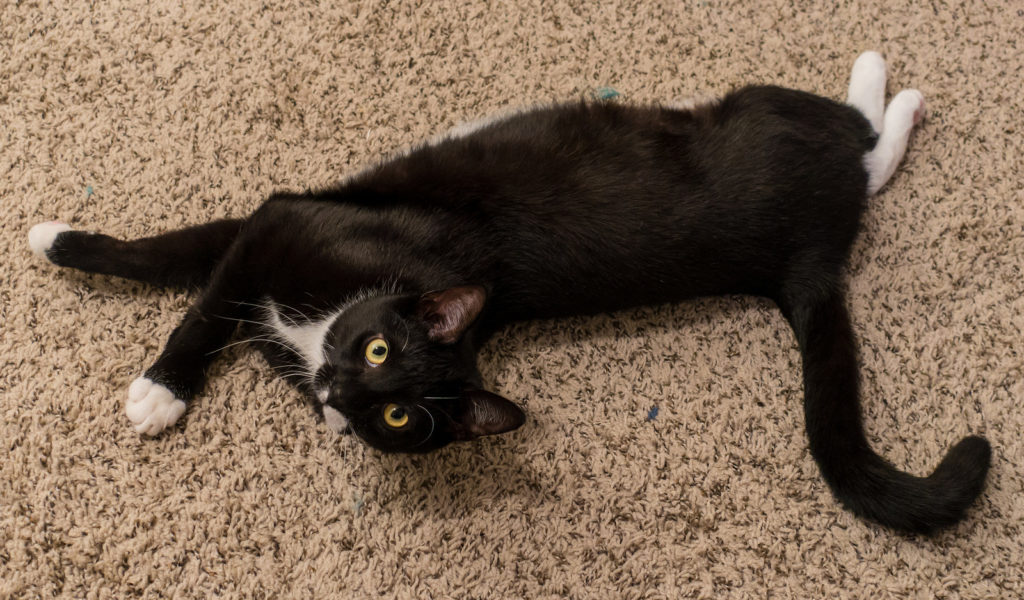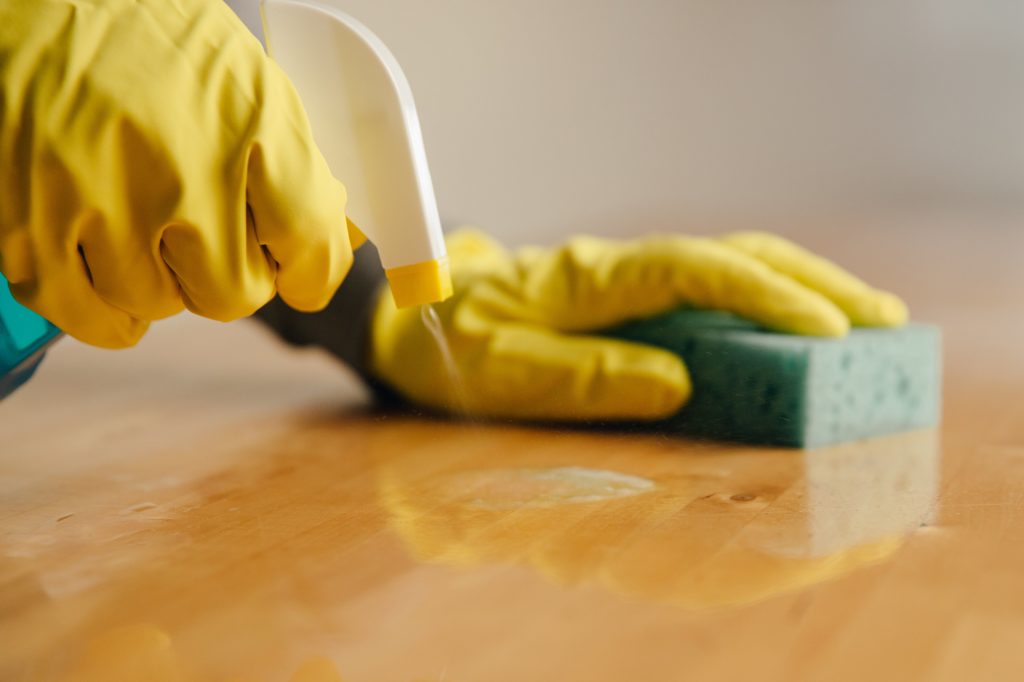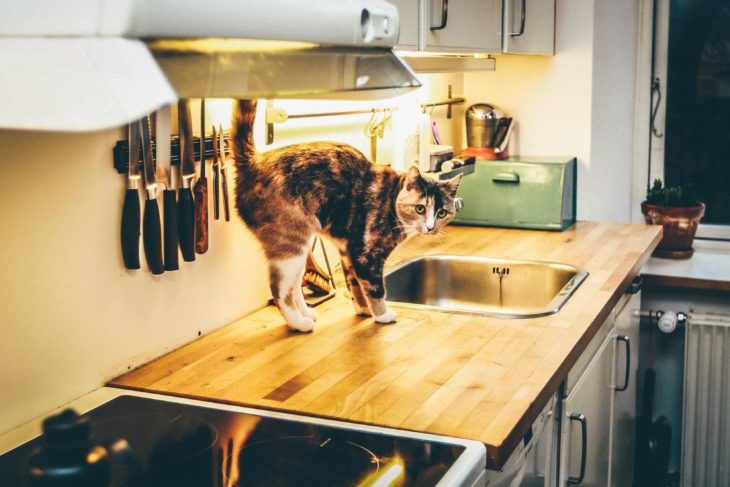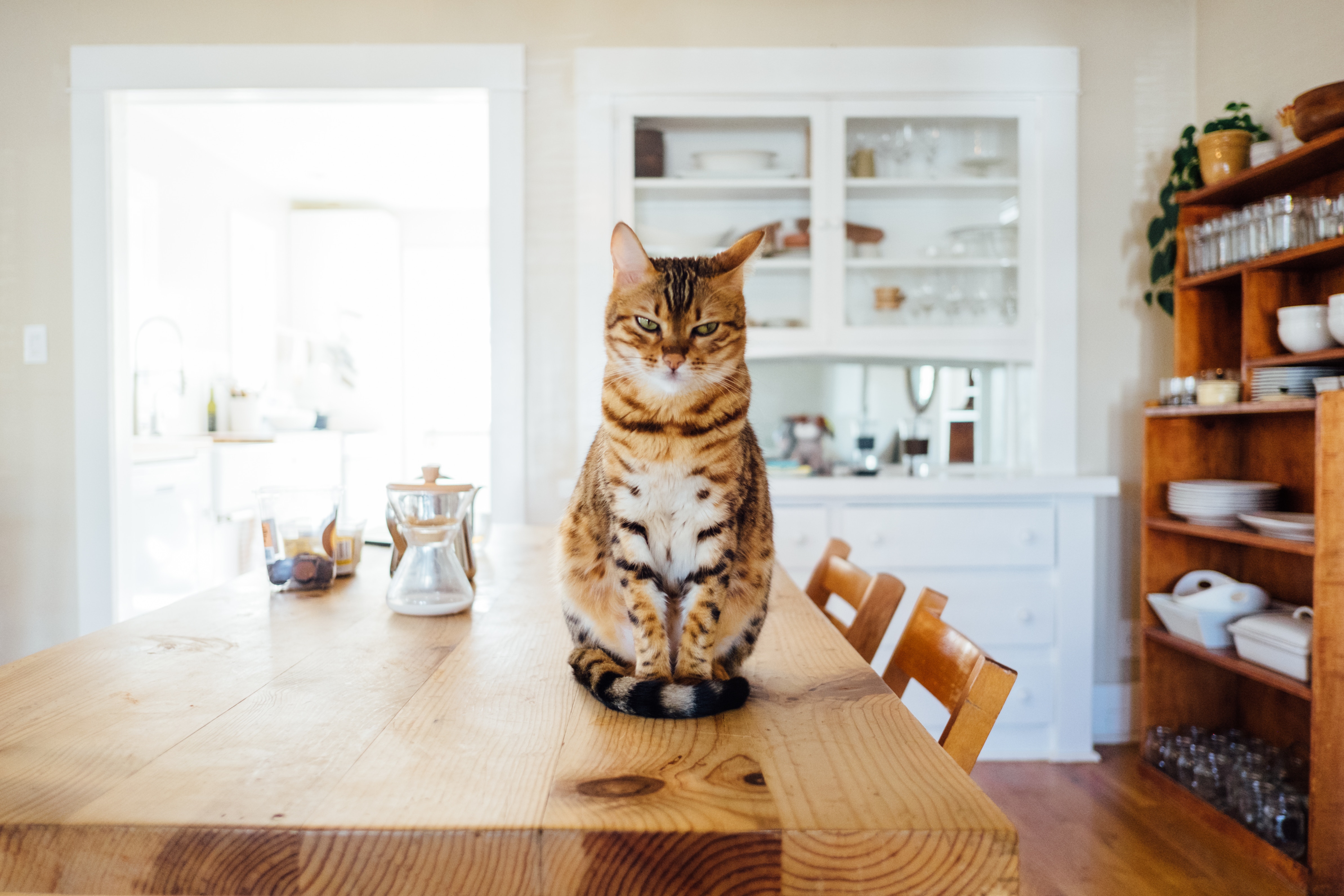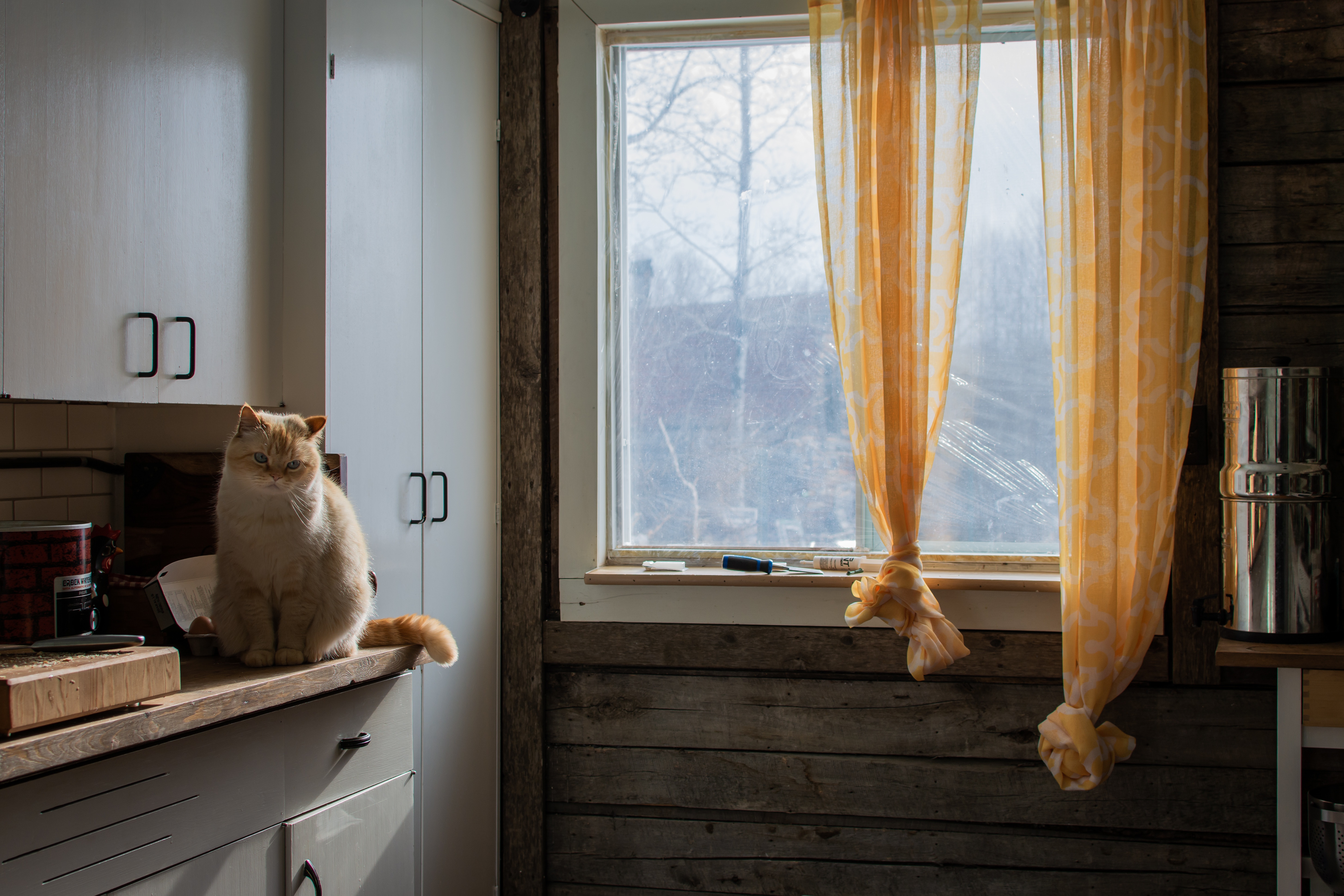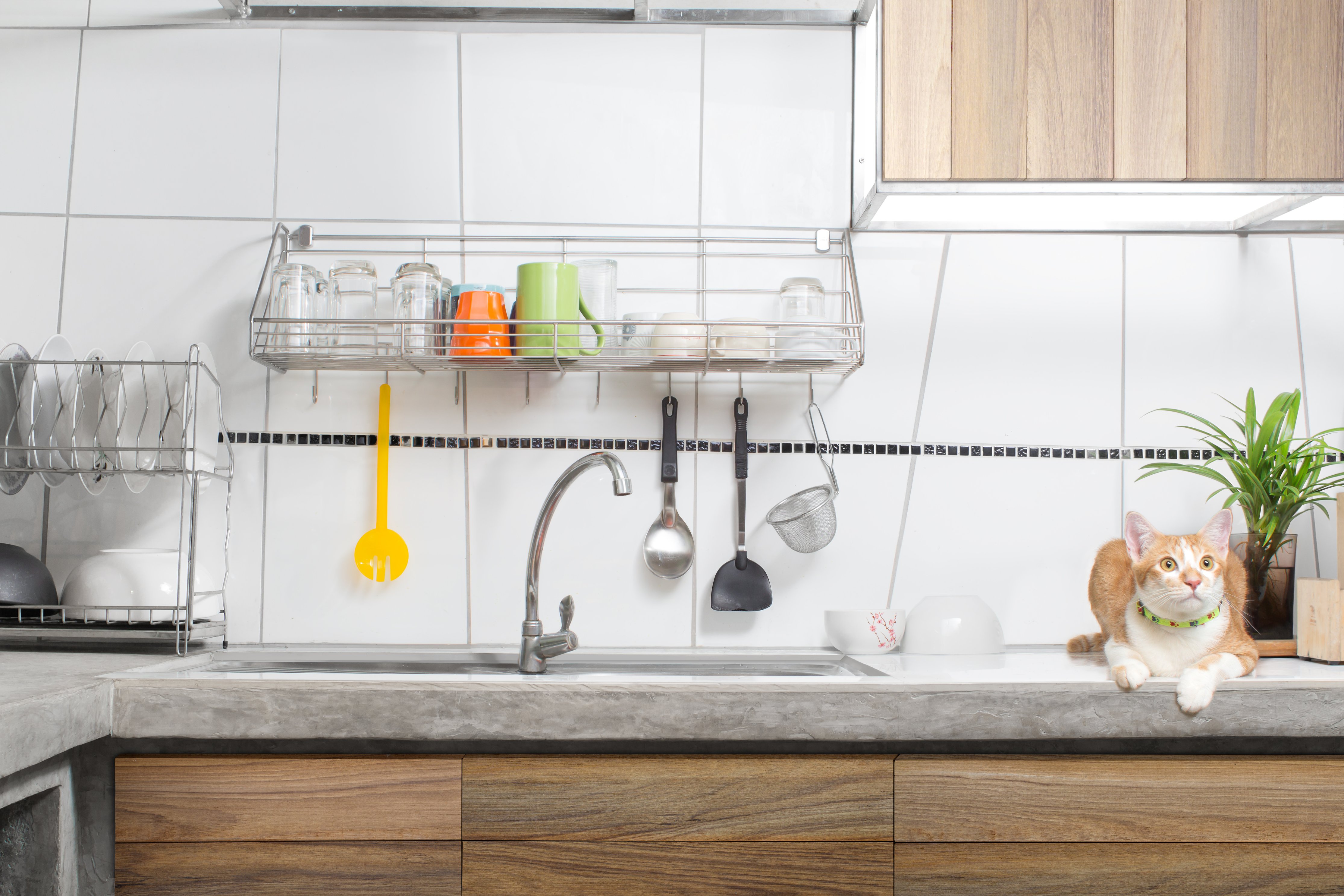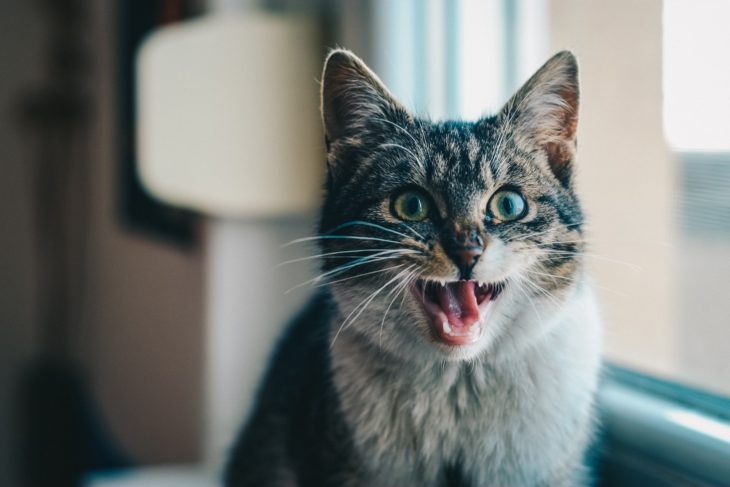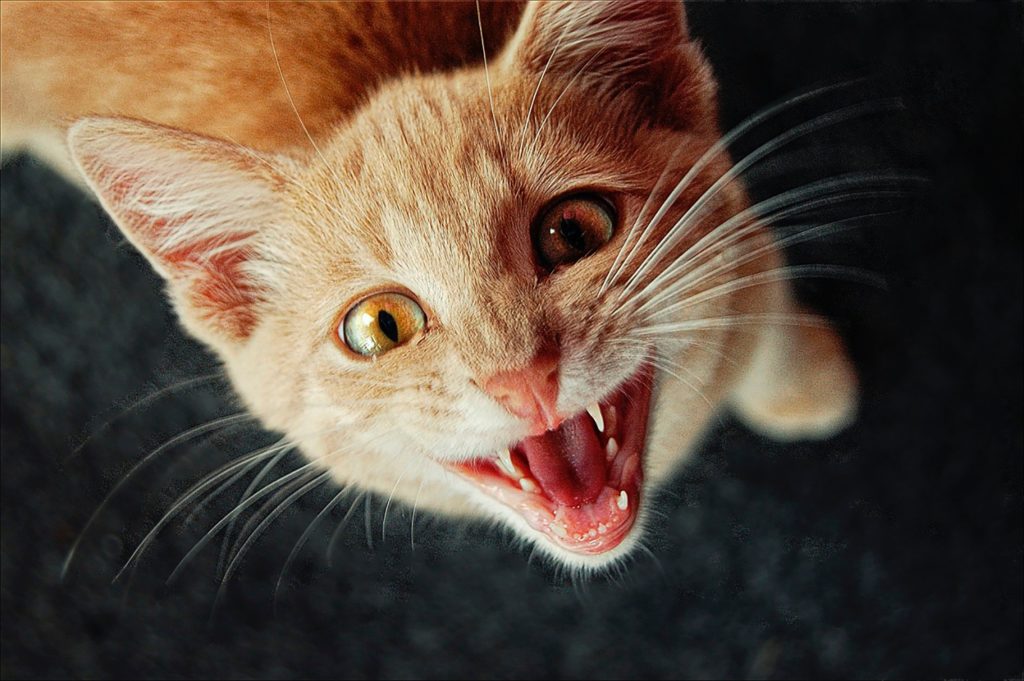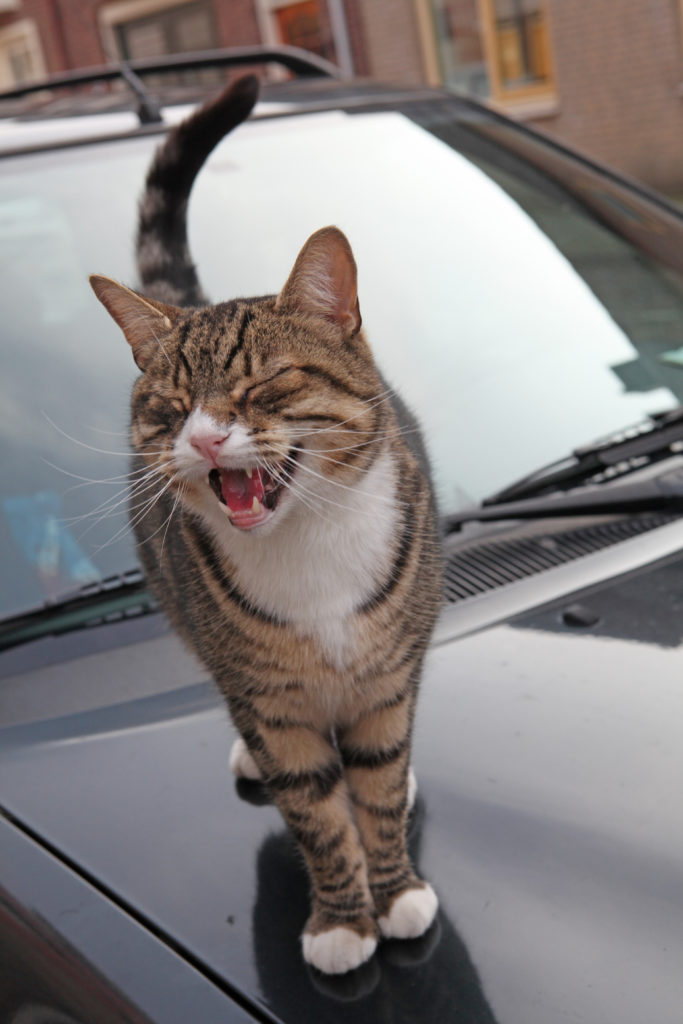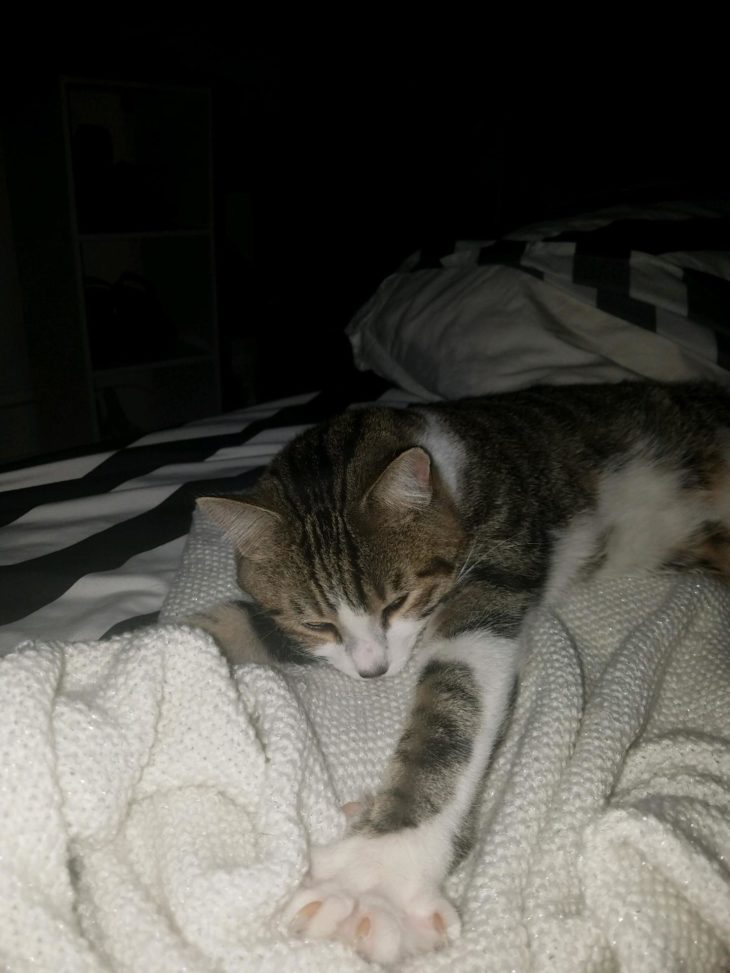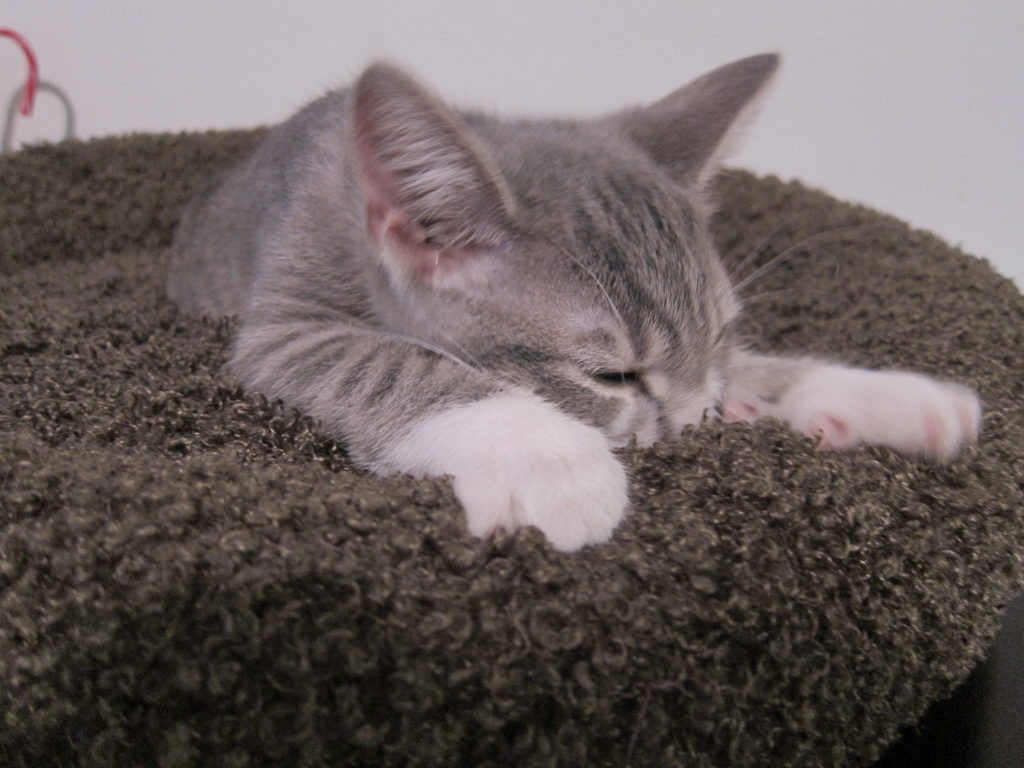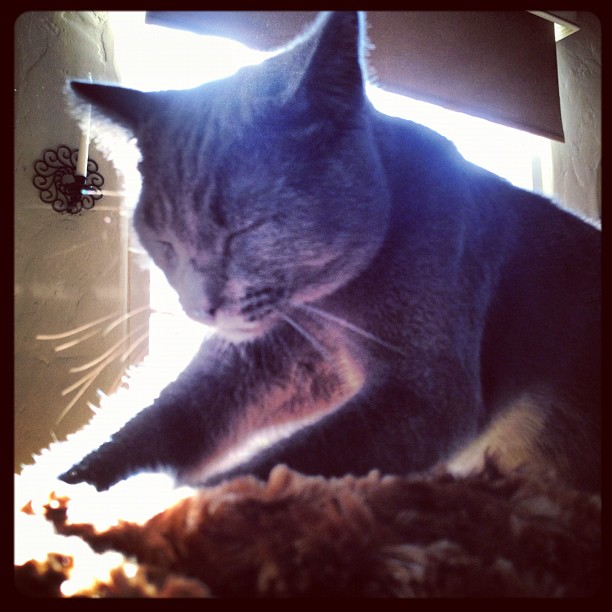Cats will be cats.
Unfortunately, this means that cats will occasionally scratch your arm, wake you up at night, unroll your toilet paper, destroy the corner of your couch, swat your glass off a shelf, and exhibit countless other behaviors that are, from a human viewpoint, problematic. When considering the cat in its natural habitat and not in your living room, it can be a little easier to understand why cats do the things they do.
Cats scratch surfaces as a way of marking their territory and sharpening their claws. They don’t just hate your taste in furniture.
Cats like to be up high so it’s easier to survey their territory and hunt. They aren’t trying to purposefully take down your ceiling fan.
Cats in the wild need to kill small animals to survive. Hunting is pretty important to them. As a result, they practice it all the time. They aren’t trying to ruin your socks or make you bleed.
Breaking cats of some of their most instinctual habits can be difficult. Most people resort to using a spray bottle of water or just yelling at their cat and hoping for the best. But neither of those strategies are good options. To help you out, we’ve put together a list of cat behavior Do’s and Don’ts for some common problematic cat behaviors.
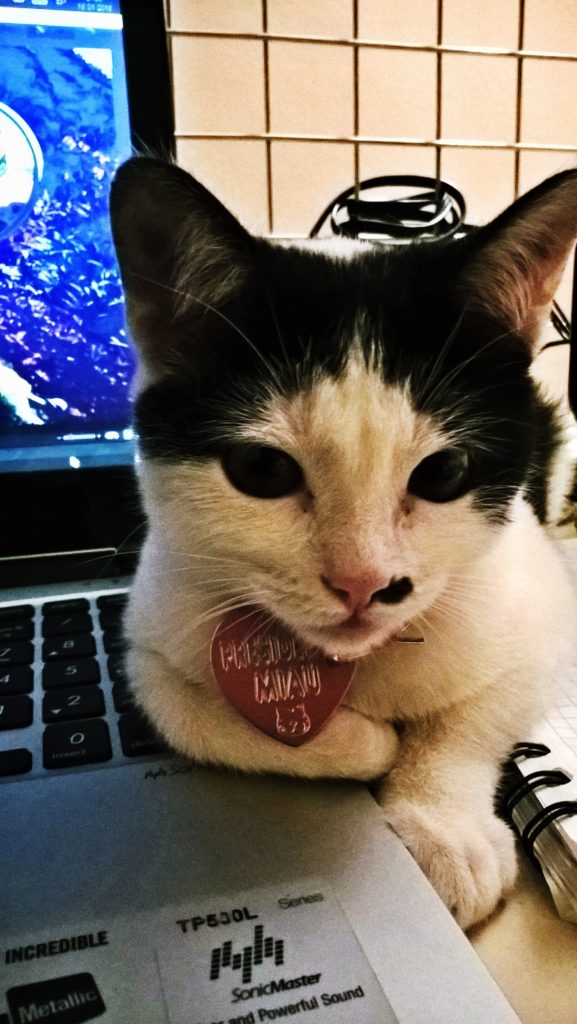
Most Importantly…
These first items are the most important ones on the list. Not to say that there isn’t some great advice on this list. But following these first few pieces of advice is paramount.
DO…
- Take your cat to the vet if the problem behavior they are expressing may indicate a health problem. Examples of these behaviors include:
- Excessive meowing
- High levels of aggression
- Urinating outside of the litter box frequently
- Loss of appetite
- Frequent eating of non-food objects
DON’T…
- Rely on Google searches to diagnose your cat’s ailments. Always take your cat to a licensed veterinarian if you have a concern that something is wrong.
- Physically abuse your pet as a means of correcting his behavior. This is the worst thing you can do. Never do this.
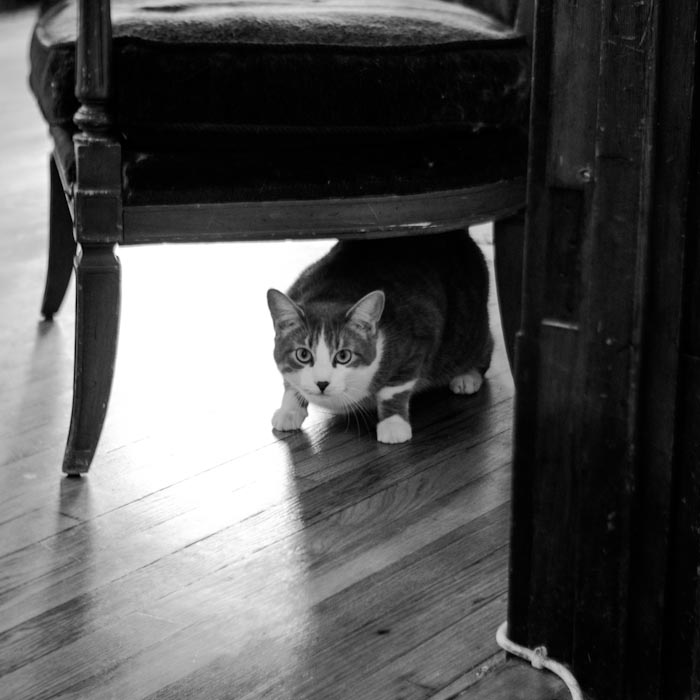
General Friskiness (Scratching, Knocking Things Over, etc.)
DO…
- Make sure your cat has plenty of interesting toys to play with. Otherwise, your cat may start creating “toys” out of your possessions and batting them around the house. Giving your cat plenty of acceptable play options will make it less likely that they will play fight with your shoes or repeatedly knock your glasses off of your nightstand.
- Provide plenty of acceptable alternatives to unwanted cat behaviors. For example, if your cat is scratching one of your door jambs, make sure your cat has a good vertical scratching post available. Sprinkle it with some catnip to try and entice your cat into finding a new place to scratch. If your cat continues scratching the door jamb, trying moving the scratching post directly in front of the area that is being scratched. If you still catch your cat scratching at the door jamb again, pick up her front paws mid-scratch and move them gently onto the scratching post.
- Try to get your cat to associate their problematic behaviors with unpleasant sensations that are completely detached from you, the owner. You don’t want your cat to think that an unpleasant condition only occurs when they exhibit the bad behavior around you. You want them to associate the unpleasant condition with the behavior. Examples of ways to create unpleasant conditions include the use of scents and tastes that cats despise as a means of deterring them from specific behaviors. We’ll discuss how to do this effectively further down in the list!
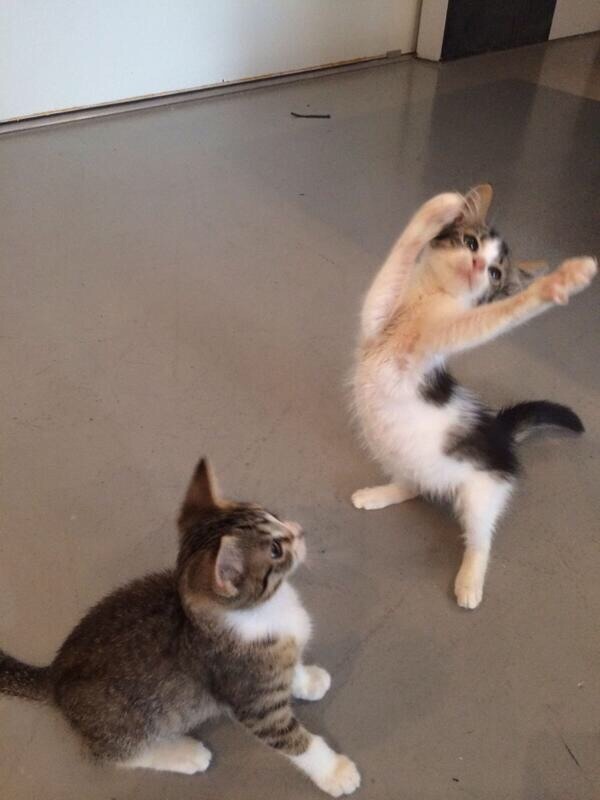
DON’T…
- Tempt fate by leaving your house full of clutter that your cat may try to play with. If you leave small objects like paper clips, rubber bands, bottlecaps, and food wrappers around your house, your cat may easily confuse these small items with toys and treat them accordingly. Cats seem to have an extra sense that helps them instantly identify tiny objects that they can bat all around your house. Small objects like these pose a choking risk to cats, and you should prevent your cat from playing with them whenever possible.
- Encourage bad behavior. If you laugh and pet your kitten after she unrolls an entire roll of toilet paper across your bathroom, she’s probably going to do it again. Don’t provide any sort of physical or psychological reward that your cat may link to her bad behavior. This can be especially difficult when very young kittens begin to nibble on our hands and feet. It’s super cute when this happens, and we tend to reward the kitten with pets and cuddles whenever they do this. Encouraging the behavior in this manner will lead to an adult cat that plays with your hands and feet in the same way, but now with adult-sized teeth and claws. Instead, don’t encourage your kitten when she nibbles at you playfully. You don’t have to discipline her or punish the behavior, but instead put your kitten down and withdraw attention for a couple minutes or so.
- Yell at your cat to try and correct their behavior. Your cat will not understand. Unless you are yelling at the cat as the bad behavior is being performed, your cat will likely not make the connection between the behavior and the “punishment.” Also, to reiterate, your cat will not understand. He may recognize that you’re heart rate goes up when you are angry and you start making louder, more aggressive noises. But he may confuse it for play. At its best, yelling at your cat will just confuse him. To reiterate a third and final time, your cat will not understand.
- Use a spray bottle or squirt gun filled with water to try and correct your cat’s behavior. Unless the cat is being sprayed as it is in the middle of performing the bad behavior, she will not link the behavior and the punishment, causing confusion. Also, she will associate the punishing spray of water directly with you, decreasing her trust in you and instilling fear. Your cat will identify the fact that she will only get sprayed if you are around while she is performing the behavior, and she will learn to do it when you are not around. Additionally, there is a good amount of evidence that shows that negative reinforcement (i.e. punishment) is an ineffective training tool, not only for cats but also for people. Animals in general respond much better to positive reinforcement than negative.
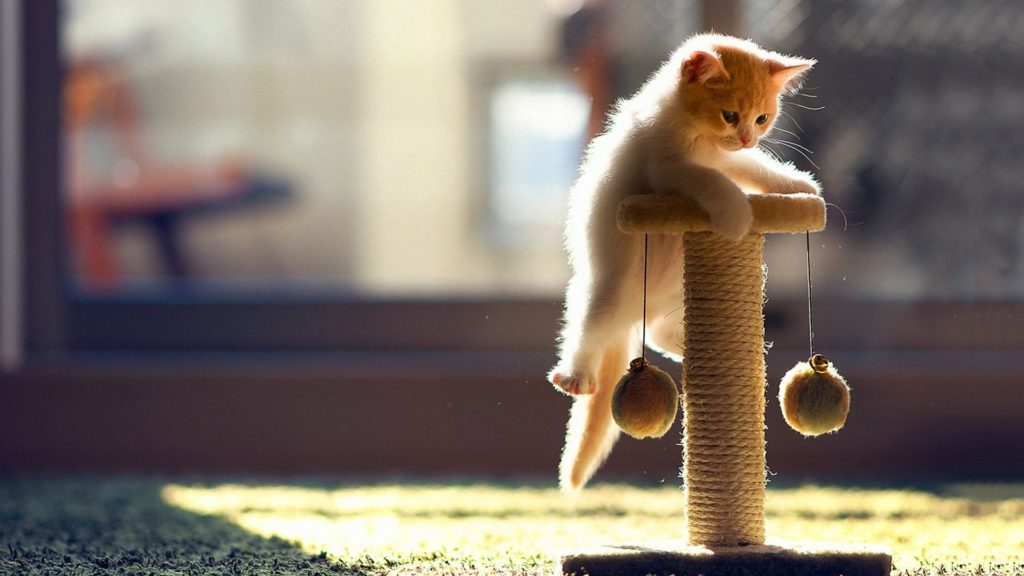
Litter Training
DO
- Make sure to check with your vet if your cat is frequently going to the bathroom outside of the litter box. There are several medical conditions that can lead to a cat exhibiting this behavior.
- Have a spare litter box handy. Cats are reluctant to use a litter box that another cat has recently used. To prevent accidents, make sure your cat always has a fresh litter box available. This typically means having at least one more litter box than the number of cats in your household.
- See if there’s a specific spot your cat likes to go to the bathroom. If so, try moving his litter box that exact location.
- Make sure the box is the right size for your cat. A kitten needs a box that is small and easy for them to climb into, while a larger adult cat may need a larger than average litter box to avoid going over the edge by accident.
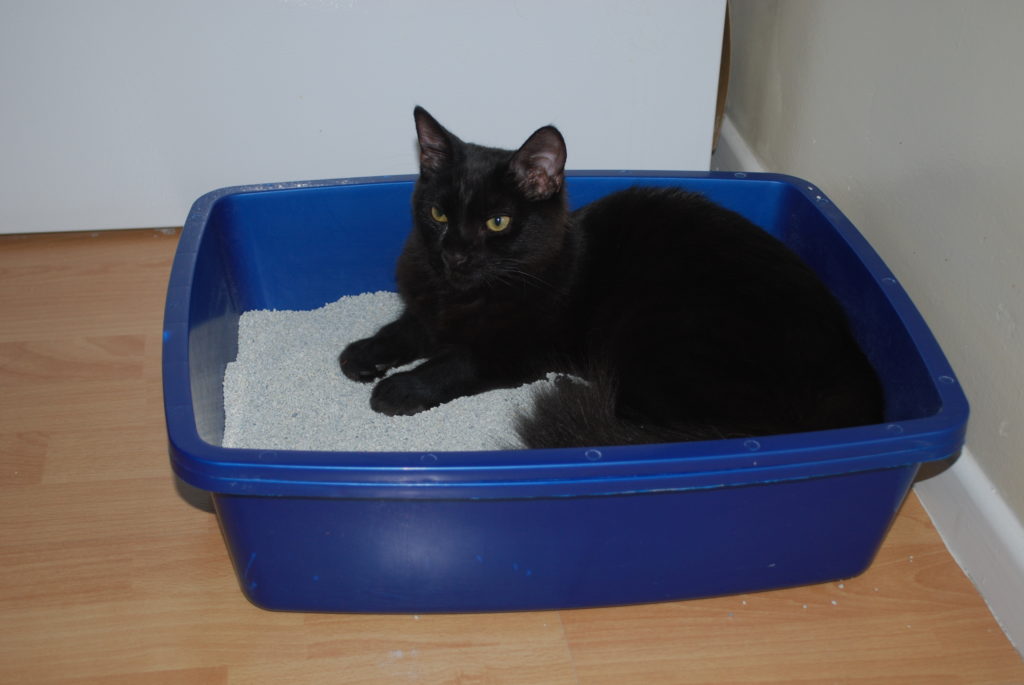
Photo courtesy of Laura LaRose.
DON’T
- Get lazy when it comes to scooping your cat’s litter box. Cats hate when their litter box is full. They’re more likely to go off and do their business outside of the box if their litter box is not well maintained. In fact, some cats won’t go in a litter box if there is any waste present at all. Keeping the litter box clean by scooping frequently will ensure that your cats always have a pleasant place to poop.
- Rely on soap and water when cleaning up cat urine following an accident. Cleaning up cat urine with soap and water may mask the odor of the urine enough for you to find acceptable, but your cat cat smell a lot better than you can. The odor will linger, and since cats like to revisit the same locations when going to the bathroom, you are likely going to have repeat accidents. Instead, use a cleaning product that has been specifically designed for removal of pet odors to neutralize cat urine stains. Make sure to act quickly after observing an accident to prevent any repetition of the behavior. If repeated cleaning is unsuccessful, you may need restrict your cat’s access to the area where accidents keep happening to prevent them in the future. Check out this article for more information about cleaning up cat urine stains.
- Use a covered litter box. Covered litter boxes are appealing since they (ideally) trap odor, preventing it from spreading around your house. In reality, adding a cover to a litter box introduces a series of other issues. Litter in covered boxes does not dry as quickly as it does in an uncovered box. As a result, it may not clump properly. Your cat will likely find the odor inside the box to be distasteful since covered boxes are typically not ventilated very well. Also, the space provided by a covered litter box puts a cat in a very vulnerable position. Cats like an open litter box since they can see in all directions. In nature, cats are very aware of their vulnerability while going to the bathroom and prefer a location where they can keep an eye on things. Going inside of a box with only one entrance and exit may make your cat nervous, leading to a failure to bury its waste or avoidance of the box altogether.
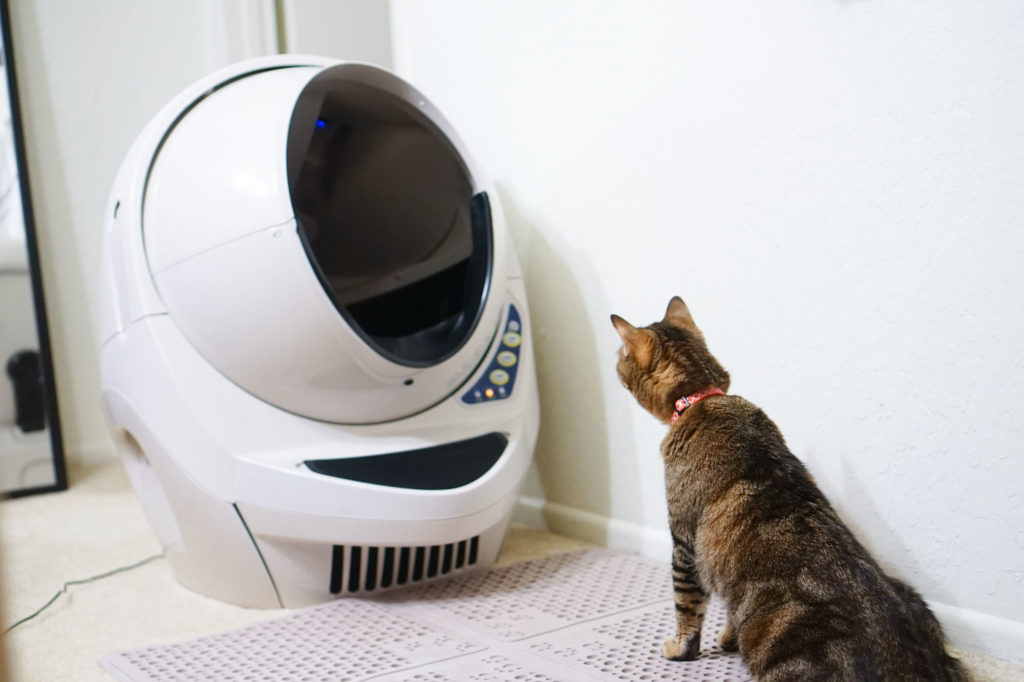
Photo courtesy of Your Best Digs
Restricting Access: Keeping Cats Away From Places and Things
DO…
- Use odors that cats hate to keep them out of certain areas. There are several sprays you can buy that can be applied to furniture and other objects as cat repellants, but these may contain harsh artificial chemicals. There are a number of natural alternatives you may already have around the house that may be worth a try. Here’s a list of smells that cats can’t stand:
- Citrus – citrus is actually poisonous to cats, but they would need to eat a lot of it in order to have any negative effects. And this is no problem for most cats, since they really hate the smell of citrus.
- Spicy smells, such as mustard, cloves, cayenne pepper, etc.
- Eucalyptus oil
- Wintergreen oil
- Citronella
- Take advantage of objects that cats don’t like the feel of, such as aluminum foil, plastic, or sticky surfaces. Placing these materials on or around areas you would like to keep cat-free will discourage your cat from walking there. Cats hate walking on these kinds of materials and will avoid them at all costs.
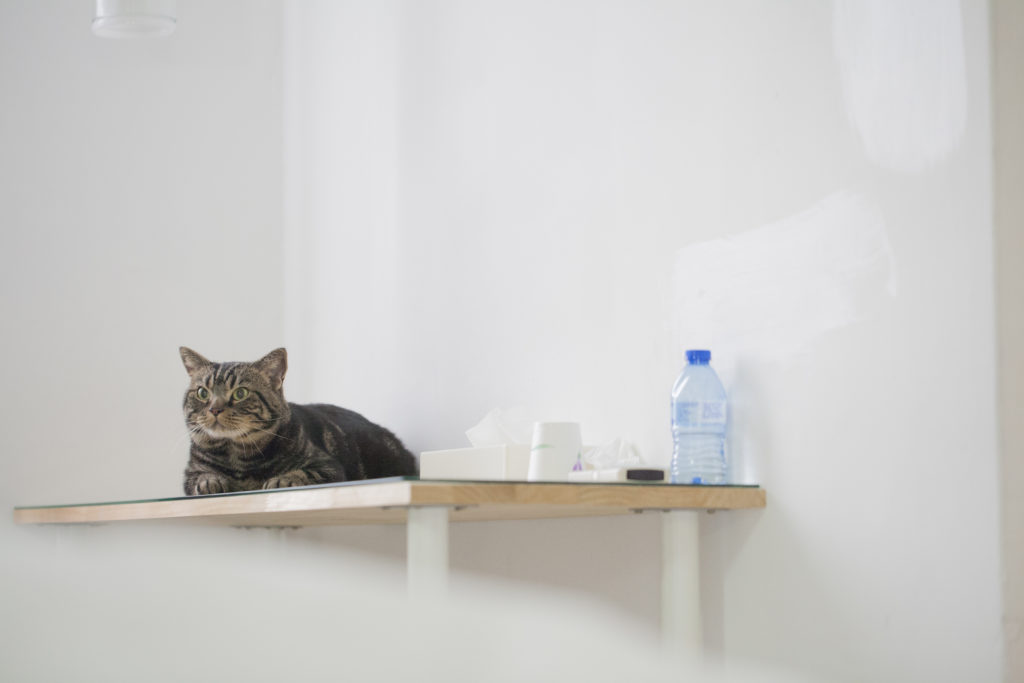
DON’T…
- Use mothballs as a cat repellant. Mothballs are highly toxic to cats. They are used for pest control since they act as a pesticide. As a result, you should keep them far away from your cat.
- Use aloe gel as a way of repelling your cat from places you want them to stay away from. Aloe is poisonous to cats and can cause serious medical problems if even a small amount is ingested. Aloe is one of over 400 plants that are toxic to cats. You can find a complete list of those plants from the ASPCA here.
